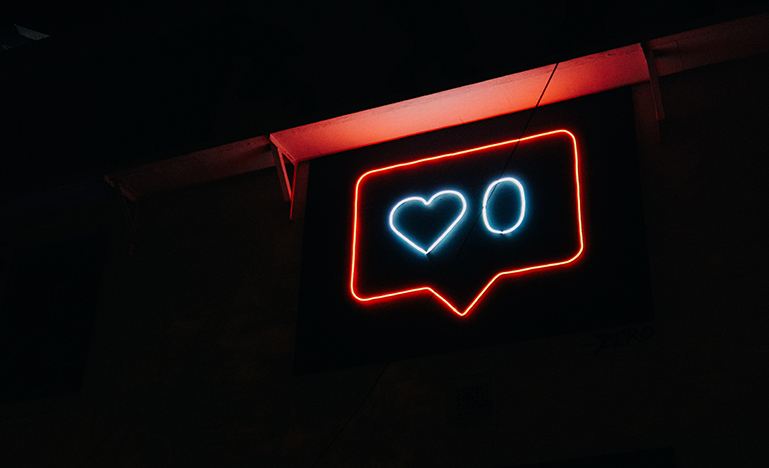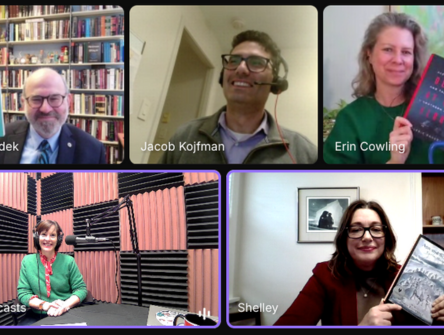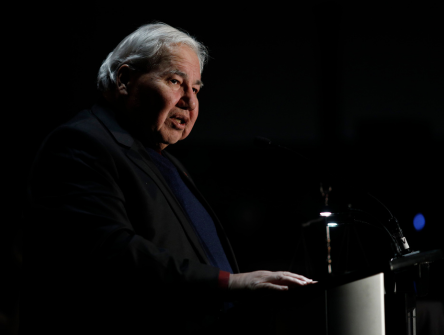Justice understood
Social media has intensified public scrutiny over the work of our courts. But with so much misinformation out there, is it time for the courts to have a public defender?

For as long as there have been open courts and a free press, media have covered trials to inform, sometimes to entertain, and generally to ensure that justice is not only done, but seen to be done. But with the justice system coming under the increasing – and often uninformed – scrutiny of the court of public opinion, it's legitimate to ask whether it needs protection of its own.
In simpler times there was no question that courts could take care of themselves. Town criers were trusted to deliver news of court verdicts and sentences without adding their critique of the legal process, trying to shape public opinion, agitating for change or disparaging the abilities and approaches of the lawyers, judges and juries responsible. And their reach was limited to the people who could physically hear them.
In the 21st century, bloggers sometimes react to rulings before the traditional media report on them. Armchair lawyers tweet their disapproval and share scathing remarks on Facebook; they troll the internet for hyperbolic responses and then repost them. Pundits on 24-hour news networks endlessly parse the minutiae of the case, and their comments, along with other news pieces and opinions about how the court’s various actors handled themselves — not all of which are informed by a deep knowledge of the case or of the law — can go viral overnight, reaching millions.
This kind of full-on criticism may be driving unfounded public mistrust of the whole justice system when, in fact, the outcome of any given case will have turned on the abilities and decisions of individual lawyers. In the past, this kind of criticism has also created public pressure to change the system – at times for the better. But what if pressure is brought to bear by people who don’t understand it to change a system that actually works?
This dilemma is what has some musing about a role for a defender of the courts. Such a person would, theoretically, be able to explain issues to the media and public, helping to maintain public trust in the system.
On balance, given the emerging pressures, Paul Schabas of Blakes’ Toronto office believes the courts need such a defender. The Jian Ghomeshi case, he says, is a prime example of why: despite widespread misunderstanding of the issues, nobody representing the justice system offered the public an explanation.
“We didn’t hear anything from the government or the Attorney General following that case,” Schabas points out. Ghomeshi’s lawyer, Marie Henein, did speak to the CBC, “but she didn’t really say anything different than what every defence lawyer says every single day.”
The Ghomeshi trial, and another high-profile case that played out this year, the trial of Mike Duffy, have certainly provided fodder for the notion that something has gone awry in the relationship between the media and the law. It has even been opined that charges were brought in these cases not necessarily because they were warranted, but because of the media storm that erupted when journalists got to the bottom of what the former CBC host and the Conservative senator, respectively, were being accused of. In Ghomeshi’s case, long before charges were even laid the court of public opinion was publicly shaming anyone who dared suggest out loud that he might not be guilty as sin.
When each of the trials began, Canadians were inundated with wall-to-wall coverage, much of it fuelled by social media, with mainstream media outlets live-blogging the play-by-play action and any member of the audience with a Twitter handle sending out their impressions of the proceedings 140 characters at a time. The Ghomeshi coverage had a vibe reminiscent of the media circus that followed the trial and subsequent acquittal of O.J. Simpson—a case that has found renewed interest lately, with a slew of movies, mini-series, and books chronicling what became known as “The Trial of the Century.”
When Ghomeshi and Duffy were each eventually acquitted, the judges’ rulings in both cases were met with massive public outrage leading to vitriolic criticism of the lawyers and judges involved – criticism that was extrapolated to the justice system in which they operate.
That Ghomeshi had been found not guilty became the focus of an intense media discussion on how the Canadian courts handle sexual assault cases. Judge William Horkins, who presided over the case, was accused of undervaluing the testimony of the women who accused the former CBC star of sexual assault. People didn’t understand how the judge could allow evidence of past romantic history between the complaints and Ghomeshi to be presented. Some claimed defence counsel Marie Henein crossed the line in her cross-examination. The Crown was slammed for failing to vet its witnesses.
Columnists and op-ed writers traded fire in the national papers. Talking heads on television panels blamed an outmoded, inherently patriarchal justice system. But that kind of discourse was not unusual for a high-profile case with a heaping helping of schadenfreude, the mighty brought low by scandal. What was unprecedented – in Canada at least – was the explosion of social media interest in the case. Every rubbernecker with a point of view had a Facebook page or Twitter account to share it. Internet trolls targeted Henein; a camp of online antagonists went after the feminists criticizing the case.
“Is the fact that we’re having these conversations new? No. But is the fact that those kinds of conversations are being had with such regularity and with so much information and with such speed?” asks Ed Prutschi, a partner at Adler Bytensky Prutschi Shikhman. “Yeah, that is new.”
Patrick McCann, counsel at Fasken Martineau in Ottawa, is no stranger to high-profile cases: he represented Pte. Kyle Brown, who was convicted of manslaughter in the 1993 Somalia Affair for the death of a Somali teenager. He was directly involved in the Gomery inquiry, and served as counsel to Nigel Wright, former chief of staff to then-prime minister Stephen Harper. He also defended Hamed Shafia, co-accused with his father and his father’s wife in their widely covered “honour killing” trial in 2012.
He downplays the idea that there is some foundational rot in the justice system that needs to be decried by the media and repaired. Rather, he says, extreme cases will always generate extreme coverage.
“You’ve got to look at who’s commenting. Journalists, unfortunately, have the universal view of themselves as experts on everything,” McCann says. “I don’t think it’s gotten any worse, at least not in the regular media. I think there’s always been an obsession with the one-off case.”
But McCann concedes that some public and media attacks on the justice system may be rooted in misunderstanding. If the Crown can’t get a conviction, perhaps in some cases it’s less a question of the nature of the justice system and more about the case the Crown puts forward.
“There’s an irony involved here. Because the Crown attorneys and cops investigating sexual assaults have been inundated with sensitivity training, they don’t ask the victims the tough questions,” McCann contends. “It would appear, in the Ghomeshi case, that the complainants were not prepared for cross-examination.”
In that case, criticism of the Crown’s cross-examination had all the trappings of the sniper fire directed at Marcia Clark, the Los Angeles deputy district attorney who prosecuted O.J. Simpson. Clark was blamed for the calamity in the courtroom when the prosecution made the call to ask Simpson to try on the bloodied gloves he had supposedly worn on the night of the murder. When Simpson struggled to put them on, defence attorney Johnnie Cochran landed the knockout line: “If it doesn’t fit, you must acquit.”
Similarly, the lead prosecutor in Ghomeshi’s case, Michael Callaghan,
took a lot of flak. The witnesses on which his case depended were repeatedly caught off guard on the stand. The Crown became a symbol of incompetence both for those who believed Ghomeshi was guilty and those who believed he wasn’t.
Clark has struck back at the idea that the Simpson case was won or lost on her performance in interviews over the years, and her musings about that trial offer some perspective on Ghomeshi’s acquittal.
“There was this huge pressure to admit what we did wrong. And, yes, of course we made mistakes. Every lawyer does. There’s no such thing as a perfect performance. But it didn’t matter. We had the evidence. Had this been a white famous football player, had it been John Smith, a regular African-American man — the evidence was overwhelming,” she told New York Magazine earlier this year. She concluded: “We weren’t perfect, but we were good enough.”
Today, discussion, dissection and criticism of the Canadian court system are arguably the loudest they’ve been in modern history. The justice system may not, as McCann says, be in the throes of some foundational rot, but it may still need to grapple with the long-term effects of critical media coverage on Canadians’ trust.
According to a 2013 Statistics Canada survey, only 57 per cent of the public have faith in the Canadian justice system. A second poll that year showed fewer than a third of sexual assault survivors have confidence in it. Regardless of whether such mistrust is founded, these are troubling figures.
If the court of public opinion starts pressing the Canadian justice system to reformulate itself to better handle sexual assault cases—or to handle any type of case in a new way—then the system needs to face a primordial question, says Prutschi.
“The one conversation we haven’t been mature enough to have as a public body politic is the very foundational question of who should be found guilty and who should be found not guilty,” he says. “Let’s have that conversation: have things changed? Is the public willing to convict more people wrongfully because too many people are getting away?”
As social norms have shifted — often driven by the media, often for the better — so have the courts. And some of the change has been positive: for example, courts no longer automatically treat a woman’s testimony as lesser than a man’s. Nor do they, as a matter of status quo, place a larger burden on non-white accused to prove their innocence. Sections of the law that discriminate against gay men have been deleted and struck down.
Still, just how widely and deeply the media’s influence should extend—and whether a defender of the system is needed to mitigate any undue influence—remains a complex matter.
Social media ups the ante
One issue created by the growing influence and infiltrating presence of social media is its potential to affect the outcomes of trials in other ways. Prutschi points out that social media makes it easier for jurors to interact with the news—including, at times, with the trial they’ve been assigned to. By its sharing nature, social media can create permanent proof of possible juror prejudice.
Now that everyone’s social media history is so immediately accessible, finding a juror’s Facebook post saying “Ghomeshi is obviously guilty,” or “Duffy is a crook!” gives the defence a huge new weapon with which to disqualify and weed out unfriendly members of the pool.
“It definitely makes it easier for jurors to get caught,” Prutschi says.
Meanwhile, an enterprising juror may have the impulse to research his or her own case, opening the door to a wealth of prejudicial material. In this way, an individual’s past history, legal and otherwise, could come flooding into a case despite the judge’s best efforts to keep it out.
Dominic Grieve, Attorney General for the United Kingdom from 2010 to 2014, highlighted these problems in a 2013 speech to the University of Kent entitled “Trial by Google? Juries, social media and the internet.”
“(The) internet is a haystack of material, scattered with the odd prejudicial needle, as it were,” he said. “Trial by Google allows a juror to locate the haystack, find the needle, pull it out and ascribe significance to it that it simply would never have had otherwise.”
Blakes’ Schabas is open to the idea that the system needs its own spokesperson – a judge whose role would be to act as a liaison between the courts, the media and the public. A press judge, in effect.
While the idea of a member of the bench having direct contact with the press is enough to make most lawyers cringe, Schabas says it’s not unprecedented.
Sir Alan Moses, who sat as Lord Justice of the UK Court of Appeal until 2014, was tapped to head up the Independent Press Standards Organisation, which sought to become a voluntary, contract-based oversight body for the English press that exists outside the government itself. He offered an idea, and it’s the one that Schabas has endorsed: appoint press judges.
Moses introduced the idea in a 2014 speech, noting that these judges have been in place in Holland for some time—known as persrechter in the lower courts and persraadsheer on appeal.
“If you ask who is best equipped to represent the legal system of which they form the central part, is it not a judge?” Moses said at the time, concluding that the judge ought to essentially play a role akin to a jury foreman, fielding questions and criticism on behalf of the bench as a whole. “Let media (liaise) through media judges, in various court centres, at various court levels, and respond to criticism and set the boundaries within which reasoned and rational debate can take place.”
That principle exists, to some degree, at the Supreme Court of Canada. The Executive Legal Officer of the court serves as both an administrative advisor to the Chief Justice and as the high court’s main media contact for journalists, briefing the fourth estate on significant cases.
More often than not, that type of role is not replicated in the lower courts. But there might be some utility to it.
Owen Rees, now in private practice with Conway Baxter Wilson LLP, served as the executive legal officer of the Supreme Court from 2012 to 2015. His job, he says, was to explain the top court’s rulings “within the four corners of the court’s judgment ... and to answer the questions that the media may have to an appeal before the court. Everything from the straightforward ‘Where do you find this information?’ to ‘Can you explain in plain language what the outcome of the case is, and why the court decided the way it did?’”
While Rees says replicating his former role in the lower courts would likely be a net positive for the public, the success of a media officer in the criminal and civil courts would really depend on how often the media chose to attend those briefings, or how often they reached out to Rees’s hypothetical counterpart. But such a role has the potential to be helpful, at least in the next Ghomeshi, Shafia or Duffy trial.
“Based on my experience, it’s a role probably best played by a lawyer who is not a judge,” Rees says. “The executive legal officer is not a spokesperson in the legal sense, and I think a judge has limits on what she or he can say on legal proceedings. I’m not sure it’s a model that would work in Canada. If there’s any gap to fill, it’s probably best for it to be a lawyer who works with the judges, but it isn’t the same thing as having a judge come explain what the decision was.”
The concept is a good one, Duffy’s criminal defense Donald Bayne told CBA National recently at the CBA Legal Conference in Ottawa in August. But it’s an idea that should probably be tested and improved upon if ever implemented, he adds. At the conference Bayne expressed great concern about decline in the respect for the rule of law at a time of growing anger against elites and experts, including those in the legal profession.
“I think the right person – a public defender of the justice system, or better yet a public explainer of the justice system – the right person could have a great deal of credibility and positive impact.” It's why he warns against bureaucratizing such a position out of fear that the public would just tune out. “If you have a good person who explains and communicates well and speaks with an authoritative voice, that would be very effective. It can’t be someone who can’t communicate in the public’s own terms. You’re trying to convey complex concepts.”
Simon Potter, a former CBA president and partner at McCarthy Tétrault in Montreal is more cautious: “The minute we talk of a ‘government employee’ doing this I worry about whether it’s truly independent commentary.” He suggests that the CBA has a role to play in reminding the public not to jump to conclusion in high profile cases. “Prosecuting attorneys could do it too.”
Still, not everyone is anxious about the impact of media scrutiny on the justice system. Some would even characterize it as beneficial. Despite his endorsement of the idea of a “press judge,” Schabas, who focuses on media and constitutional law, has an unruffled view that can be summed up as, “If change is needed, change will come.” He raises the example of how the courts have come under fire in the media for their handling of sexual abuse cases in the past, and how—in line with a tidal shift in society’s attitude towards equal rights—they have reformed themselves from within to better adjudicate those cases.
He points to changes in how the courts have handled domestic assault cases over the past few decades. In the old days, the victim would provide a statement and the police would lay charges, but when the case reached a courtroom, “the victim would recant, and the Crown would shrug, and the judge would shrug, and let the guy go.”
Schabas credits the Toronto Star and other media for pushing the courts to allow victims’ previous police statements to become admissible in court—which is what eventually happened. That the law evolved proves the system works, he says.
Prutschi — who is a regular contributor to the Toronto Sun and commentator on CBC and CTV—believes the media attention surrounding the Ghomeshi and Duffy trials may have been a good thing.
Prutschi argues that improved public access is a positive shift. “I like the fact that more people can hear what happens in our courtrooms,” he says “The more we talk to people about it, I think the more confidence they get in the system.”
Of course there can be drawbacks. Between the advent of the sound-bite era and the growth in the numbers of “citizen journalists” and armchair lawyers, Prutschi says the public debate can be a bit distorted, though he’s not convinced that social media and the internet age have substantially changed the “tenor of the conversation.”
“There’s a beauty in letting people state their opinions, even if they’re wrong opinions,” he says.
The public town hall on the nature of our justice system may be getting more raucous, but Schabas contends that it hasn’t yet had an impact on an accused’s right to a fair trial.
“If the question is: has it affected trials, and the outcome of trials? I would say it’s emphatically: no,” Schabas says.
Similarly, despite the theoretical risks caused by jurors interacting with social media, Prutschi is skeptical about it becoming a pervasive issue in Canada. “I think juries take their role very, very seriously” here, he says.
Whether the courts need a public defender – and who the best spokesperson might be – may be a matter for debate, but one thing is clear: public interest in the judicial system is a runaway train. The need may ultimately hinge on where it takes us.


